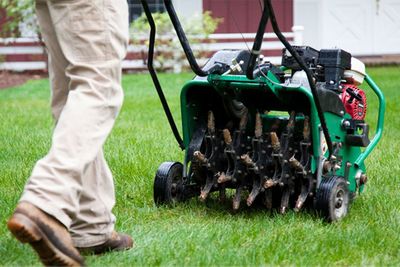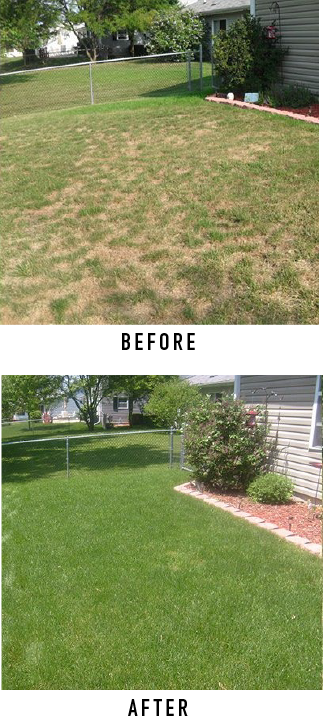Aeration



Almost everyone understands the need for regular fertilization, watering and proper mowing in maintaining a healthy lawn. Few people, however, realize the importance and benefits of lawn aeration.
Soil compaction can be your lawn’s worst enemy. Compacted soils restrict air penetration deep in the soil, causing roots to suffocate and die. As a result, roots grow shallow and horizontal up on the surface where air and water is available. This condition leads to weak, unhealthy turf, thatch problems and lawns that are more susceptible to drought, insect and disease injury.

Why Do I Need It?
Every lawn is different. Soil composition, type of soil, how the lawn was installed and how the lawn is used are all factors to determine how often the lawn needs aeration.
Soil Composition - Heavy clay soils are the lawns that need aeration the most. We always want to encourage a deep, healthy root system to create a beautiful lawn. Heavy clay soils are more difficult for the roots of the turf to penetrate deep into the ground. By aerating and relieving this barrier, this allows roots to take advantage of this empty space and grow deeper.
Seeded or Sodded - Sodded lawns need aeration every year for about 5 years before the thatch layer is under control. The thatch layer is a network of old stems, seed heads and mowed grass blades that form a mat right above the soil line. Sod companies encourage this so they can roll it up for easy installation. Because of this thatch layer, aeration is a necessity or insect and/or disease problem follow shortly after.
Commonly, seeded lawns do not have a thatch layer or a very minimal one. For seeded lawns, aeration is required when a soil sample shows weak roots and/or compacted soil. It is still good practice to aerate about every 3-5 years for the health of the lawn.
Kids, Dogs, Parties — Oh My! - How the lawn is used also determines if and how often the lawn needs to be aerated. If you have kids, dogs and holiday parties, all this foot traffic over time causes a good soil base to become compacted. When this happens, it makes it harder for the lawn to create deeper roots and allow for turf to fill in naturally. Aeration relieves this compaction, so the lawn has the foundation it needs to do its best.
+ What time of year do you get an aeration?
We perform aerations in the spring and the fall. We always encourage a fall aeration for a few reasons. The root system is a bit more active and reach deeper into the soil. If the summer is harsh, it can help repair drought and heat damage for the lawn to bounce back quicker.
+ I have an invisible dog fence/sprinkler system. Does this need to be marked?
Yes. The machines we use can damage these systems and need to be flagged by the respective companies.
+ Do you core aerate or spike aerate?
We only core aerate. Spike aeration does virtually nothing to improve the soil, compaction or thickening the turf. Core aeration is the only way to go.
+ Do I need to rake up the cores when the service is complete?
No. These cores break down naturally. During this process, small organisms in the soil help eat through the thatch layer, reducing it and making your lawn perform better.


